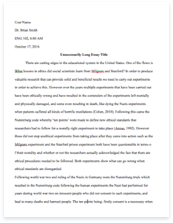Several of Ted Hughes’ poems feature extreme weather

- Pages: 4
- Word count: 927
- Category: Weather
A limited time offer! Get a custom sample essay written according to your requirements urgent 3h delivery guaranteed
Order NowTed Hughes Regards the elements as a powerful force in many of his poems and he is in awe of the weather particularly noticeable in ‘Tractor’, ‘Warm and Cold’ and ‘Wind’ in which Hughes seems to be quarantined because the storms are so violent that all the inhabitants of the house can do is shelter inside. This poem accentuates the power of nature. The house and storm themselves signify the opposing forces of nature and civilisation. Man is at the mercy of the weather frail and vulnerable in comparison for example he describes the weather conditions in ‘Tractor’ as “hell of ice” and “head pincering” emphasising the man’s vulnerability.
This can be associated with the use of language in Wind, words such as “Blinding” relate to man in the same way that “head pincering” is an assault on man. Personification is frequently used in making the elements ‘come to life’ by using vocabulary such as ‘stampeding’ and ‘booming’ in Wind. Another example of personification can be found in Warm and Cold; “Moonlight freezes the shaggy world Like a mammoth of ice The past and the future. Are the jaws of a steel vice. ” Hughes has taken some interesting liberties with language in these four lines. The moonlight is said to freeze the world, when in fact it only illuminates it.
The idea is that moonlight is a ‘cold’ light. The word ‘shaggy’ is applied to the world when it could also be applied to the mammoth in the next line. Mammoths have been found frozen in ice, perfectly preserved for thousands of years, and the implication here is that the world is about to go into a sort of suspended animation for the night. This is hyperboly as it suggests the return of the Ice Age. Things like mammoths freezing have happened and will continue to happen, and so the past and the future have a strong grip on our existence, like the jaws of a vice.
Hughes uses animals and extreme weather combined in poems to convey something about humans. In these poems Hughes is making the simple point that nature adapts very simply and naturally to the earth’s climate, but humans don’t seem to know how to do so at all, highlighting the superb adaptability of wildlife to the cold and harsh weather conditions, in comparison to humans’ attempts to become as comfortable. Hughes admires the way that animals can cope with the intense cold but does not favour the humans’ techniques, this reiterates the fact that they are ‘worlds apart’.
The first thing that struck me when reading these poems was the amount of similes. A perfect example of the use of similes in these poems is, “Like a loaf in the oven. ” This is an extremely clever use of a simile as it not only gives the impression of safety and security but also associates the respiration of the badger’s abdomen with the rising of a loaf in an oven which is warm like its dwelling. The use of language in this phrase is more personal due to the use of “the oven” rather than “an oven”.
Both the cold and the warmth are mainly described through similes, for example the butterfly is ‘in its mummy’ ‘like a viol in its case’. Here, the butterfly is protected from the cold by its cocoon (its mummy). Mummies usually hold dead bodies, but this one contains a live chrysalis, which shows how although winter seems to kill things, there is life underneath. In The warm and the Cold, all three stanzas follow the same pattern. There are four lines that are about the cold and the tight grip it has on the world. Then there are eight lines about the creatures which manage to hide away from the cold.
Since they have twice as many lines, this may suggest that the warmth is stronger than the cold: that the warmth somehow wins. The elements also ‘win’ in Wind where some of the words in stanza 1 suggest that the house is like a ship out at sea in a storm, being pounded by the wind and waves. It could also be interpreted as the wind is like galloping, stampeding horses. In Warm and Cold, the cold is described as steel trap, a tightly screwed nut, and steel vice. All of these are industrial images, which suggest a tight grip of cold on the world.
Lots of words suggest the strength of the wind: crashing, booming, stampeding, floundering, blinding, wielded, dented, drummed, strained, bang, flung, bent, shatter. The poem contains some strong images (words that help you to imagine what it looks like). Hughes uses a slightly different approach in tractor; he uses personification to describe the tractor and the setting. He makes them seem alive because of this. For example: The tractor has “open entrails”. It “defies flesh” when it won’t start. It “coughs” when the man is dependant on the machine it “ridicules” him.
It finally “jabbers laughing pain-crying mockingly Into happy life”. It is “like a demon” and starts “Shouting Where Where? ” Right at the end it is “raging and trembling and rejoicing”. As for the setting, “the copse hisses” which makes it seem like an animal, and the light “flees”. In Warm and Cold there is another contrast, in the last few lines, the farmers are also inside and warm, but are likened to roasting meat turning on spits, which gives an unfavourable impression. The animals are happy because when they sleep they have no worries. But the farmers are unable to sleep because they are worried.










